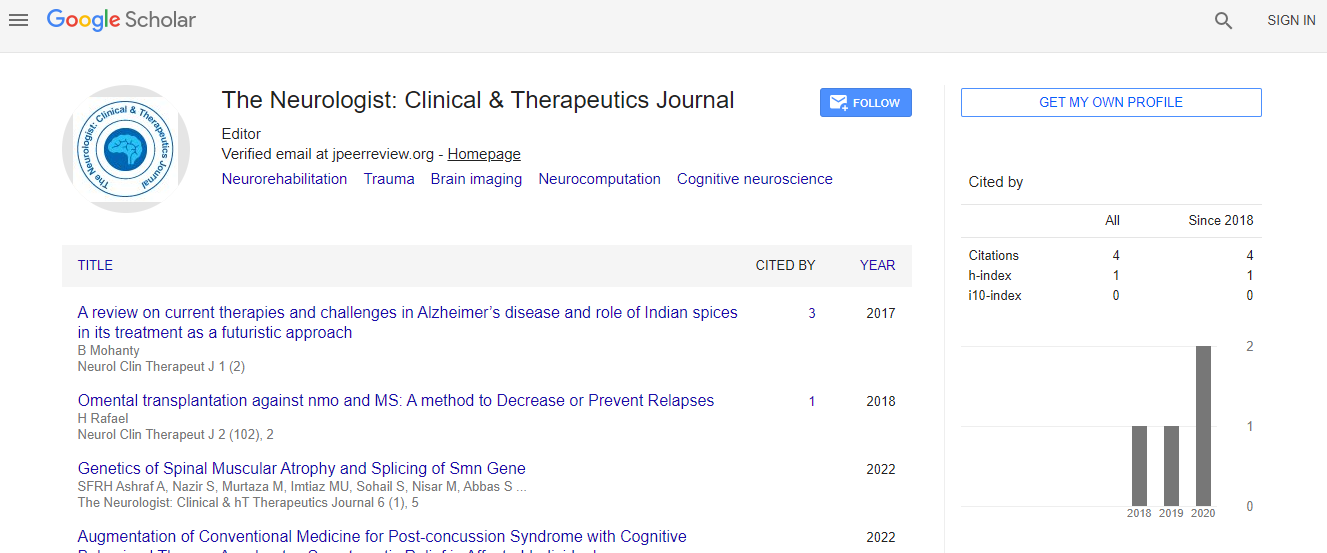Neurosurgery 2020: E-BABE- Use of the Three-dimensional Printed Model-assisted Screw Installation for the Treatment of Posterior Spondylolisthesis Transpedicular Fixation - Ismail Kaya - Kütahya Health Science University
*Corresponding Author:
Copyright: © 2020 . This is an open-access article distributed under the terms of the Creative Commons Attribution License, which permits unrestricted use, distribution, and reproduction in any medium, provided the original author and source are credited.
Abstract
The present study aimed to compare patients in whom an operation plan was prepared before surgery using the 3D modeling technology with the application of freeh& screws using magnetic resonance imaging (MRI) & computed tomography (CT) scan images. The printings & modelings were established in the Innovation Laboratory of Kütahya Health Sciences University. Of 36 patients, 16 underwent surgery with 3D printing (group 1) & 20 with the freeh& technique (group 2). The surgeries were performed by the same surgeons. Moreover, 5-mm pedicle screws were located in 92 vertebras in 16 patients in whom 3D modeling was used & in 124 vertebras in 20 patients in whom this modeling technique was not used. No screw invasion was classified under Category D (>4-mm cortical invasion). By contrast, of the 216 cases of screw invasion, 12 (5.5%), 25 (11.57%), & 144 (66.66%) were classified under Categories C, B, & A, respectively. Invasions occurred in all lumbar spine levels other than L5 & were commonly observed in the L1 vertebra level. The use of the improved 3D technology in the neurosurgery field is advantageous for surgeons as it decreases the preoperative preparation phase, length of operation, & risk of complications. A retrospective review of 27 consecutive pediatric & adolescent patients (aged 10–18 years) who underwent surgery using the progressive reduction technique between 1998 & 2012 was performed. The hospital institutional review board approved the study.
Children with spondyloptosis especially presented with low back pain due to spasm & hamstring tightness. Widening of the ilial wings, flattened buttocks, thoracolumbar hyperlordosis leading to anteriorly protruding inferior ribcages, loss of trunk height leading to absent waist line & exaggerated flank creases with lumbar sag were the usual clinical findings. Limitation of straight leg rising was common but none of our patients presented with a motor deficit; however, 3 patients had sensory deficits at L5 at the time of presentation.
All patients were serially assessed at 1, 3, & 6 months & yearly postsurgery, by clinical examination including complete neurological status & analysis of symptoms, radiography, & grading of outcome measures Oswestry Disability Index (ODI) & visual analog scale (VAS). Parameters to indicate fusion were clinical resolution of symptoms with a radiographically solid-appearing bone bridging anterior to the cages, consistency in maintenance of lumbosacral measurements, & no evidence of instrumentation failure, loss of reduction, or pseudarthrosis at 2 years. Based on our inclusion criteria, high-grade spondylolisthesis at L5-S1 (grade 3: 3 [11.1%] cases, grade 4: 7 [25.9%], grade 5: 17 [63.0%]) were operated using this progressive reduction technique. Of the 27 patients, 24 were female (88.9%) & 3 were male, with a mean age of 13.9 years (range 7–18 years).
Mean follow-up was 120 months (range 24–192 months) & all patients presented a solid fusion at the 6-month follow-up visit. The radiographic parameters measured were the mean slip percentage, slip angle, & sacral slope. Mean slip percentage reduced from 89% to 23%, with the Meyerding grade of all cases reduced to grade 2 or less. The slip angle improved from 45° to 3°, with an improvement in sacral slope from 13° to 35°. All the radiological parameters showed statistically significant difference (P < .05) postoperatively.
Most of the literature on spondyloptosis has not stressed upon concomitant scoliosis in these patients. Four of our spondyloptosis patients had concomitant scoliosis which corrected spontaneously after the surgery & did not require further intervention. Clinically, resolution of symptoms were noticed as early as the patients were mobilized, & straight leg raising of greater than 75° in all patients was noted by 6 months after the procedure. Students returned to school & maintained excellent scholastic & athletic abilities. Four of the earlier-operated patients have married, & had children with normal delivery.
Closed reduction, plaster cast immobilization (6–12 weeks), followed by posterior/anterior fusion after 3–6 months has been described with satisfactory results but loss of correction is observed on long-term follow-up. Staged resection of L5 with reduction & fusion of L4 onto S1 (Gaines procedure) has shown relatively unacceptable complication rates. Follow-up of a series reported 25% required reoperation secondary to delayed union or instrumentation failure. Our series reports no permanent neurological deficits in contrast to most of the series describing reduction in high-grade spondylolisthesis. Though no neuro-monitoring was used intraoperatively in our series, we feel that the complete exposure of both L5 roots & visualization during every step of reduction, very gentle & gradual reduction maneuvers & the overall experience of the senior author are the contributing factors toward fewer complications.
The described progressive reduction technique followed by posterolateral or interbody fusion proved effective in managing high-grade spondylolisthesis in pediatric & adolescent populations, as assessed by radiographic & functional measures. A significant reduction of high-grade spondylolisthesis severity was observed, with restoration of global sagittal balance via correction of the lumbosacral kyphosis. Though surgically dem&ing, the technique is safe & reproducible, & the long-term outcomes are very satisfying.

 Spanish
Spanish  Chinese
Chinese  Russian
Russian  German
German  French
French  Japanese
Japanese  Portuguese
Portuguese  Hindi
Hindi 